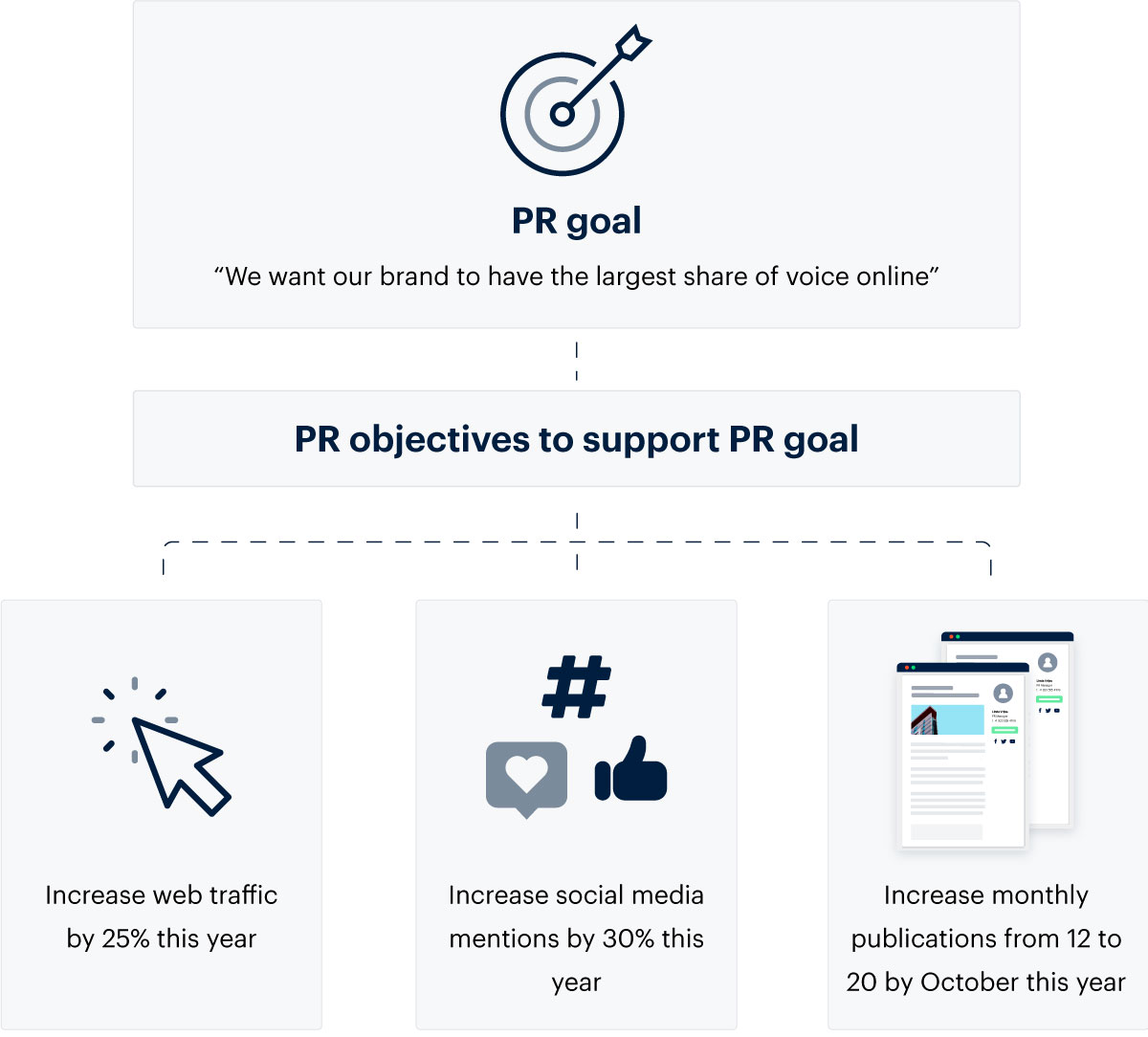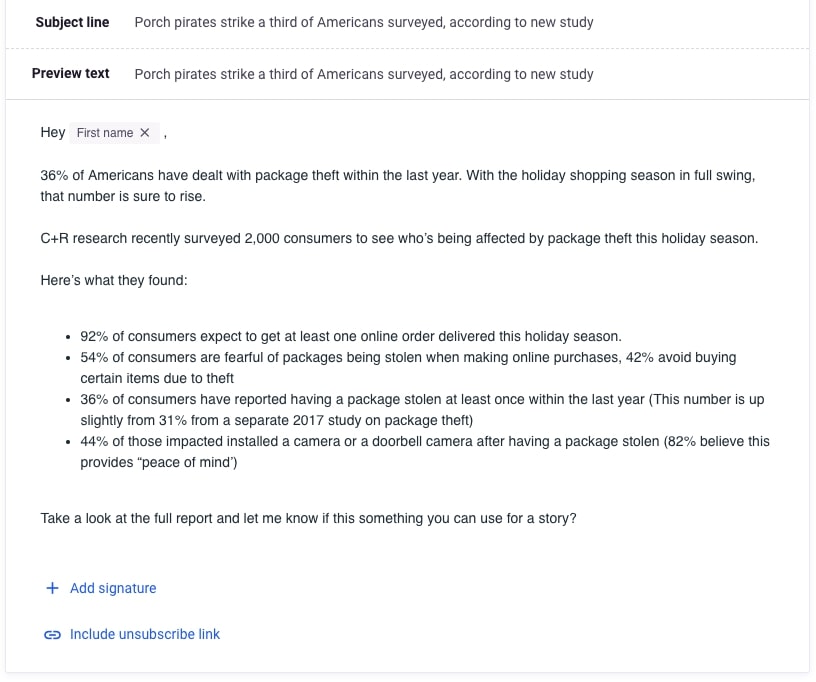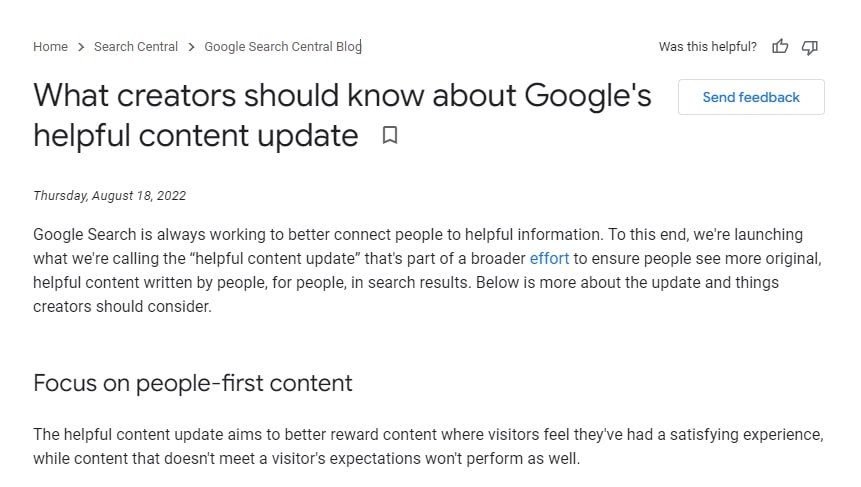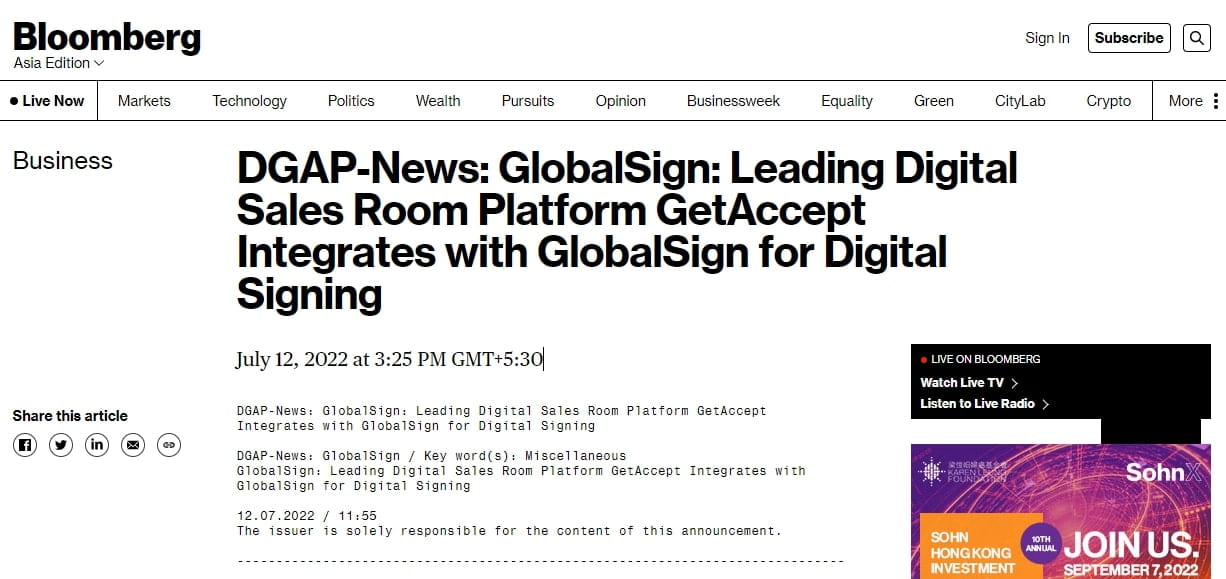The number of startups is growing at a faster rate than before. Around 305 million startups are currently operational around the world. The ever-growing startup scenario has made it more challenging for businesses to reach their audience and build a successful brand.
Startup owners are investing heavily in marketing and PR so that their startups garner some much-needed attention. Did you know that a simple social media post or an article on a website can contribute greatly to brand recognition and marketing efforts?
A good PR strategy plays a significant role in improving the audience’s perception of your brand, thus strengthening your brand image and boosting its growth.
According to the State of Journalism 2021 report by Muck Rack, an average journalist receives over 5 pitches per day. However, only 25% of the stories they write come from these pitches.
Hence, writing a convincing email pitch is essential in catching a journalist’s attention. A poorly-written pitch can get lost among the sea of emails top journalists receive. To write a winning email pitch, we have shared a few dos and don’ts that will guide you in tailoring your message for them.
The Dos
Table of Contents:
- Set Actionable Goals
- Tell a Story
- Keep It Simple
- Back Your Claims with Relevant Data
- Showcase Your Work with a Relevant Portfolio
- Focus on Making a Personal Connection
- Express Gratitude Once the Story Goes Live
- Improve the Pitch Based on Open and Response Rates
#1. Set Actionable Goals
The first step of the best PR strategy is to identify actionable goals. For example, if a startup company wants to leverage PR for increasing sales, then tracking sales would be one of the goals of its PR strategy. A clear goal acts like a strong foundation for the overall strategy and helps you with focusing the effort in the right direction.
Determine the purpose of your PR efforts. Do you aim to build brand awareness? Are you wanting to attract attention to a new product launch? Or is it to increase the website traffic?
Developing a clear PR goal will help you plan your strategy accordingly.
Once the PR goals are set, brainstorm the objectives that will support your goals. For example, if the PR goal is to be the top voice in the industry, the objectives would be to increase website traffic, increase social media mentions, and more.
Check out the infographic below, which shows how an organization that is planning on increasing its brand voice online can do so by focusing its effort on smaller objectives.

#2. Tell a Story
Engage the journalists by sharing an exciting and newsworthy story. Captivate them using a personal anecdote and then dive into the details. Remember, your pitch should focus on informing them about what you do, why you do it, and how it can help their readers with their goals.
Build curiosity by giving just enough information to interest the journalists in your story. The pitch should be creative and appealing enough to stand out amidst hundreds of others.
Remember, telling a story is simple.
- Be expressive while maintaining a certain level of professionalism.
- Leverage other forms of content, such as infographics or a video, instead of sharing a lengthy write-up about your startup journey.
- Highlight the uniqueness of your offerings subtly.
#3. Keep It Simple
Most journalists receive around 100 pitches every day. For example, Anthony Ha, a senior writer at TechCrunch, revealed in an interview that he receives up to 80 pitches in a day. Considering the competition in this space, capturing the attention of journalists is becoming challenging each day. Hence, keep your message clear and concise.
Save the journalist’s time (and yours!) by writing a short and sweet message about how you plan to provide value to the publication’s readership. Don’t forget to include a press kit or any other documentation link to support your message. Avoid giving away too much information as it might confuse the journalists and take their attention off the main topic.
The ideal length of the pitch should be between 150 – 200 words. Here is an example of a short yet impactful email pitch.

#4. Back Your Claims with Relevant Data
When pitching your story to the journalists, you need to give them the evidence to back your claim. Adding data or relevant statistics to the pitch makes it more appealing and strengthens your claims.
Include the desired information in the form of research data, survey results, testimonials, case studies, and other important details in your pitch. Don’t forget to double-check all the information before sending the message. Inaccurate information can instill doubts in the minds of journalists.
Check out this media pitch Matthew Zajechowski from Digital Third Coast Internet Marketing used to reach out to the journalists. This pitch offered an original survey report that was a newsworthy topic at that time.

#5. Showcase Your Work with a Relevant Portfolio
A portfolio is an excellent medium to showcase your work to journalists and help them understand why it would make a good story. Hence, it is ideal to have the required assets or the portfolio ready before you send out the pitch.
This portfolio provides journalists with all the information about your startup they would need to prepare your story, thereby saving time and speeding up the entire process. Include the projects you have undertaken, customer reviews and testimonials, success stories, and more in your portfolio. You can also include the achievements or accolades you have received throughout your startup journey.
Zeiss Group offers incredible insights into its portfolio with the help of its website. The website gives in-depth information about their products, company history, project sites, certifications, and more.

#6. Focus on Making a Personal Connection
In these times of cold pitching, it’s important to build a personal connection with the journalists before working with them.
Conduct research and find out more about the journalists you’re pitching. Read their articles thoroughly to understand their writing style, thoughts, and how they communicate with the audience. This will help you craft a pitch that speaks directly to them.
Start by creating a database of the journalists you wish to work with and build connections with them. A simple thank-you email or a social media mention can go a long way in fostering long-term associations.
Check out how Verified First, a background screening tool, shares the guest posts written for its integration partners with its Twitter audience. Remember, a simple retweet can benefit both you and the journalist or publisher.

#7. Express Gratitude Once the Story Goes Live
Thank the journalist once the story featuring your company gets accepted and published. Connect with them over an email within 24 hours and tell them how grateful you are for the coverage. Don’t forget to keep in touch with them, even when you are not looking for collaborations.
Further, share the published story online and ensure that it reaches a larger audience.
- Post the link to the story on your company’s website homepage
- Write a blog post about the featured story and publish it on the company blog
- Share the story on your company’s social media pages
- Include the story link in your email signature
The more you promote the story, the more advantageous it is for your startup and the journalist.
#8. Improve the Pitch Based on Open and Response Rates
Monitoring the performance of the email pitches is essential to understand whether your PR outreach strategy is working as expected.
Improve your email message with the help of the following tips to increase its chances of being read by journalists.
- Review your email subject line. Ask yourself if it is compelling enough to grab the attention of the journalists. If not, revise it to make it more clear and interesting.
- Edit the email message to make the pitch concise. Focus only on the five ‘W’s – who, what, when, where, and why. Tweak the angle you pitch from, if possible.
- Keep an eye on the email open rate and response rates every time you send the pitch. Ensure consistent tweaks until you start seeing positive results.
The Don’ts
Table of Contents:
- Do Not Waste Journalists Time
- Do Not Ignore Your Competitors
- Do Not Oversell
- Do Not Share the Same Pitch in Every Context
- Do Not Send Out a Mass Pitch
- Do Not Call a Journalist
#1. Do Not Waste Journalists’ Time
Being constantly bothered by irrelevant emails and useless pitches, journalists often don’t have the time to go through lengthy messages or open attachments. Don’t share every minute detail about your startup in the pitch and waste their time.
Summarize your story in a blog post and share the same with the journalists. For example, Google leverages blog posts instead of press releases when announcing its big news.
Check out this post about their latest helpful content update.

This news was later picked up by leading publications in the SEO domain.

Don’t share unnecessary information or technical details in the email pitch. Talk about your story and let the journalists know why it would be a great addition to their publication.
#2. Do Not Ignore Your Competitors
Should you mention your competitors in the PR pitches? The answer is it depends. Sometimes, mentioning them can add a whole new dimension to the PR pitch. Don’t be afraid to mention your competitors, as it can present your startup in a better position.
For example, if you offer a suite of cloud-based software for simplifying eCommerce operations, sending a pitch about how this software will help eCommerce business owners is not a newsworthy story. However, if you send a pitch mentioning how this suite of products is different from the ones currently available might grab the attention of the tech journalists.
Along with that, highlighting unique order fulfillment options and delivery methods like one-day, international, expedited, or overnight might give a strong urge to customers to engage with content.
#3. Do Not Oversell
One of the worst things you can do is present your story like a salesman. No doubt, you wish to get the story featured by the publication. But overselling the story may not always work in your favor.
Journalists have the knack for identifying such pitches that serve no real purpose or contain false claims. These pitches are likely to be deleted without any consideration. The more realistic your pitch is, the higher the chances of its acceptance.
Never feel entitled, rather believe in your story. Focus on the strengths or key pieces of information and present the same to the journalists. Convey your passion for your startup while trying to be as original as possible.
#4. Do Not Share the Same Pitch in Every Context
Hundreds of startups are looking for PR coverage, and unfortunately not every publication is ideal for startups. Hence, identifying the ones that fit the industry is essential. Any pitch that is not relevant to the publication, the industry, or its audience is sure to be considered spam.
Even if a few journalists do accept your pitch, it will not be beneficial for your startup, as the publication’s audience might not be interested in reading the content. Hence, detailed research and pitch customization are essential for PR success.
Check whether your story aligns with the publication’s latest work, and find out the type of stories their journalists cover. For example, pitching a story about technical details of a new SaaS product launch would be of interest to entrepreneurs, SaaS startup owners, and developers.
However, if the same story is published in a small business magazine, it would be a complete waste of time and effort. Instead, tweaking the story in a way that highlights how the SaaS product can be leveraged by small businesses might work wonders.
Let us have a look at the PR strategy of GetAccept, an electronic signature management platform. Check out this press release about the GetAccept-GlobalSign partnership. This article would be well-appreciated by entrepreneurs and SaaS startup owners. However, small business owners might not find it interesting.

Now, have a look at this story. Observe the style in which the title of this press release is written makes it more appealing to other business professionals.

In this case, the story about the partnership remains the same. But the presentation varies. And, that adds a whole new dimension to the PR effort.
#5. Do Not Send Out a Mass Pitch
The last thing any journalist would want to receive is a copy/paste message shared with numerous other journalists. Mass mailing should be avoided when pitching to journalists. Remember, they will be able to spot a generic pitch that has been sent to every email address on the database.
Another mistake that is commonly found in PR pitches is writing the wrong name or sharing the wrong message altogether. This usually happens when you use email software to send bulk messages.
Personalize your pitch for every journalist you reach out to and tailor it to suit the publication they work for. The more genuine your request is, the better your chances of receiving a response from them.
Proofread your message before pressing that send button. Put in some effort to customize your pitch and focus on building good working relationships with the journalists.
#6. Do Not Call a Journalist
One of the quickest ways to turn off journalists is by calling them. Although it is nice to follow up with them about your pitch, be mindful of their tight schedule. It’s important to remember that there is a fine line that exists between following up and being overly demanding.
So, instead of calling them asking for an update, it is ideal to follow up over an email. Here are a few points to remember when following up.
- Wait for at least two to four days before sending a follow-up email to the journalists.
- Don’t send too many follow-up emails. Limit yourself to just one or two messages.
- Keep the follow-up message short and straightforward to make it easy for them to respond.
- Focus on adding more value by sharing additional information, such as a testimonial, interview, or latest research along with your follow-up messages.
- If you don’t receive any replies to the follow-up emails, assume that they aren’t interested in your story. Thank them for their time and focus on building relationships for future collaborations.
Summing Up
Crafting a pitch the right way is essential to ensure that it gets picked up by the journalists. Write clear pitches by telling a story, focus on backing your claims with relevant stats, and personalize your pitch to meet the publications’ requirements.
Follow the dos and don’ts we have mentioned in the blog post when writing your startup pitch and boost your startup exposure with the help of excellent PR campaigns.






